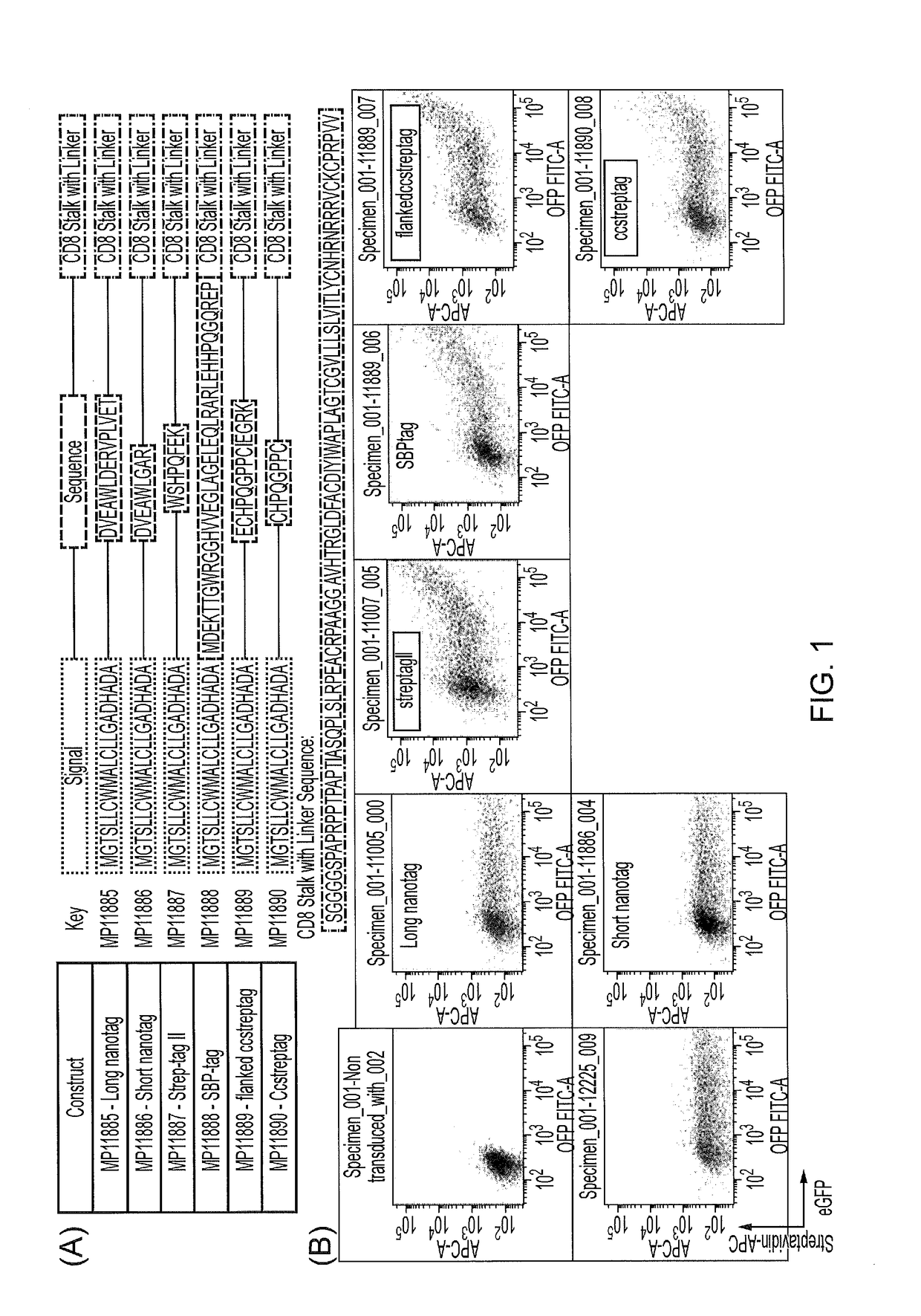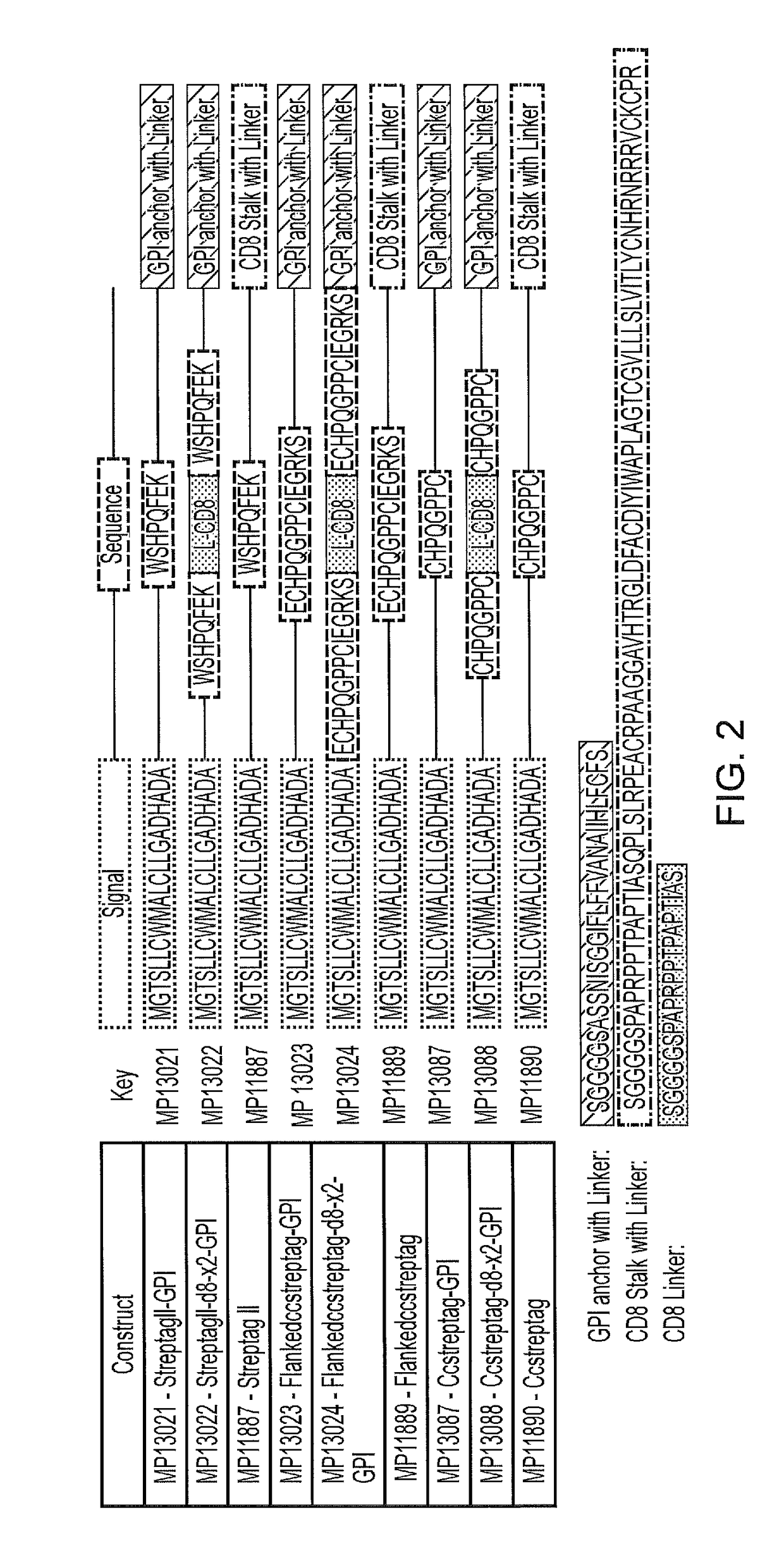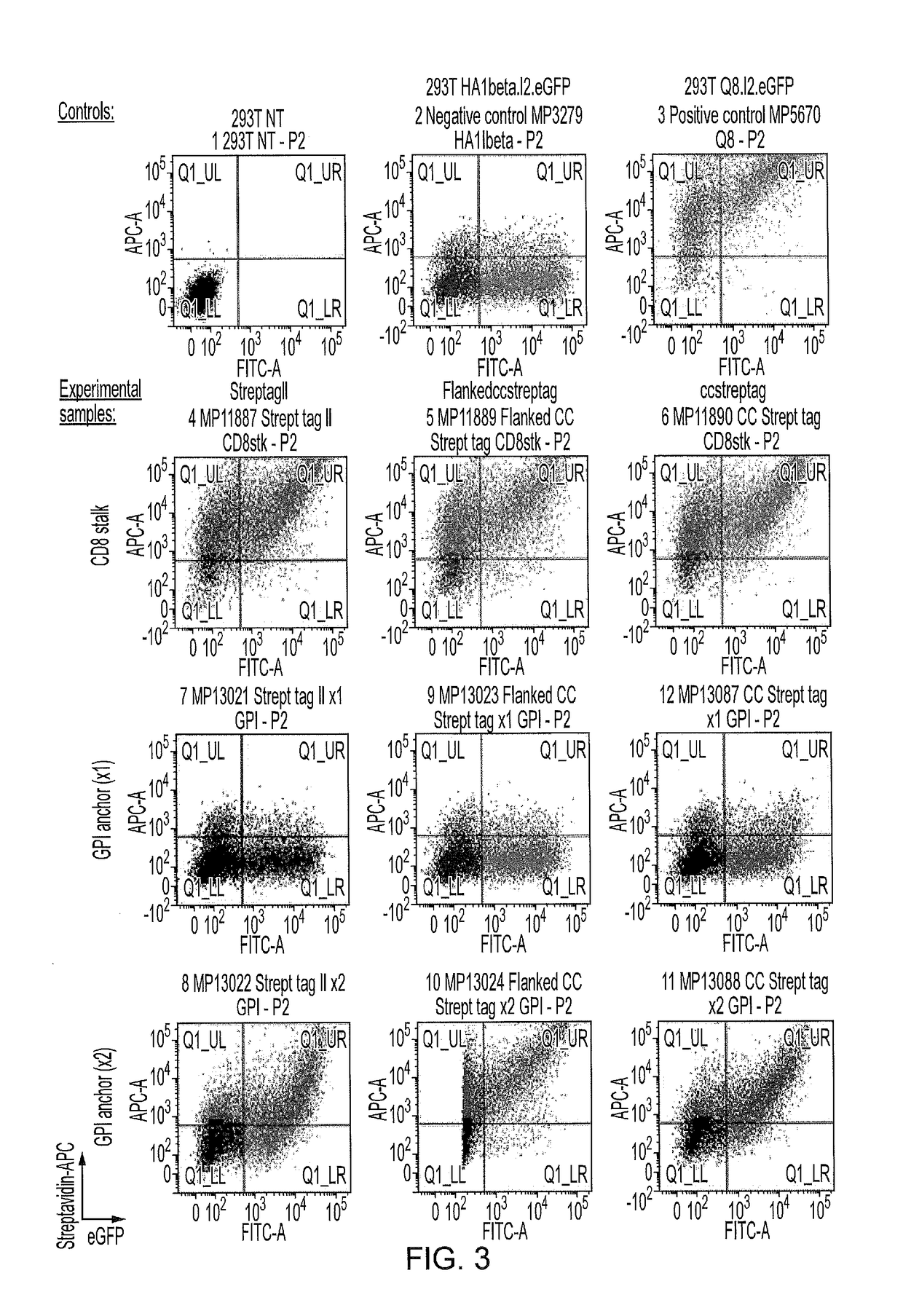Method and means for purifying retroviral vectors
a technology of retroviral vectors and purification methods, applied in the field of retroviral vectors, can solve the problems of 40% viral recovery, hampered progress in lentiviral gene therapy, and inability to easily scale up, so as to achieve high efficiency and efficient removal
- Summary
- Abstract
- Description
- Claims
- Application Information
AI Technical Summary
Benefits of technology
Problems solved by technology
Method used
Image
Examples
example 1
[0220]Six biotin mimicking peptide tags were selected to study how well they might bind streptavidin when expressed as part of a cell surface protein (FIG. 1A). An expression construct coding for a signal peptide attached to the amino terminal of theses tags was generated. In addition, the carboxy terminal of these peptide tags was attached to the CD8 stalk, CD8 transmembrane domain and a short part of the CD8 endodomain sufficient to anchor the protein to the membrane. To test their binding to streptavidin, HEK 293T cells were transfected with each construct individually and 48 hrs post-transfection cells were harvested and stained with Streptavidin conjugated to the fluorophore Allophycocyanin (APC) (FIG. 1B). Three tags, long nanotag, short nanotag and SBPtag did not exhibit any binding to streptavidin in this format; whereas StreptagII, Flankedccstretag and ccstreptag successfully bound to Streptavidin compared to the negative control.
[0221]The optimal form...
example 2
562 Cells Expressing a Biotin-Mimic Epitope
[0225]To establish that the two versions of Flankedccstreptag are able to purify lentivirus from cellular supernatant, an initial experiment was carried out involving sorting of K562 cells expressing these tags on their surface using streptavidin beads. We reasoned that if the tags could attach to a streptavidin matrix while expressed on cells with sufficient stability to allow sorting of expressing cells, they should be suitable for lentiviral capture too.
[0226]K562 cells were retrovirally transduced to express the two tags and transduction efficiencies were determined by eGFP expression using flow cytometry (FIG. 4 Transduced K562 plot). Subsequently, transduced cells were mixed with non-transduced K562 to assess the efficiency of sorting using two streptavidin-beads sourced from Life technologies (Dynabeads) and Miltenyi (Microbeads). Sorting was performed as per manufacturer protocol. Sorted cell fractions were collected for both sortin...
example 3
Tagging of Lentiviral Particles with Biotin-Mimic Epitopes
[0227]It was then investigated whether expression of the tags in HEK293T cells resulted in viral particles which bud out of the cell to mature acquiring the epitopes on their surface.
[0228]293T cells expressing both epitopes separately were established by retroviral transduction (FIG. 5). Transduction efficiencies of the cells were almost 100% positive cells based on eGFP expression. Subsequently, these cells along with NT-293T cells (control) were triple transfected to produced VSV-G-pseudotyped lentivirus using a second generation packaging system. Supernatants were harvested 48 hrs post-transfection and processed to remove any suspended 293T cells. Subsequently, supernatants were incubated with streptavidin-dynabeads for 2 hrs at 4° C. with rotation. Beads were then magnetically purified and resuspended in fresh media. Successively, sorted beads were added onto NT-293T cells which were stained for transgene expression 72 h...
PUM
| Property | Measurement | Unit |
|---|---|---|
| affinity | aaaaa | aaaaa |
| concentration | aaaaa | aaaaa |
| TM | aaaaa | aaaaa |
Abstract
Description
Claims
Application Information
 Login to View More
Login to View More - R&D
- Intellectual Property
- Life Sciences
- Materials
- Tech Scout
- Unparalleled Data Quality
- Higher Quality Content
- 60% Fewer Hallucinations
Browse by: Latest US Patents, China's latest patents, Technical Efficacy Thesaurus, Application Domain, Technology Topic, Popular Technical Reports.
© 2025 PatSnap. All rights reserved.Legal|Privacy policy|Modern Slavery Act Transparency Statement|Sitemap|About US| Contact US: help@patsnap.com



